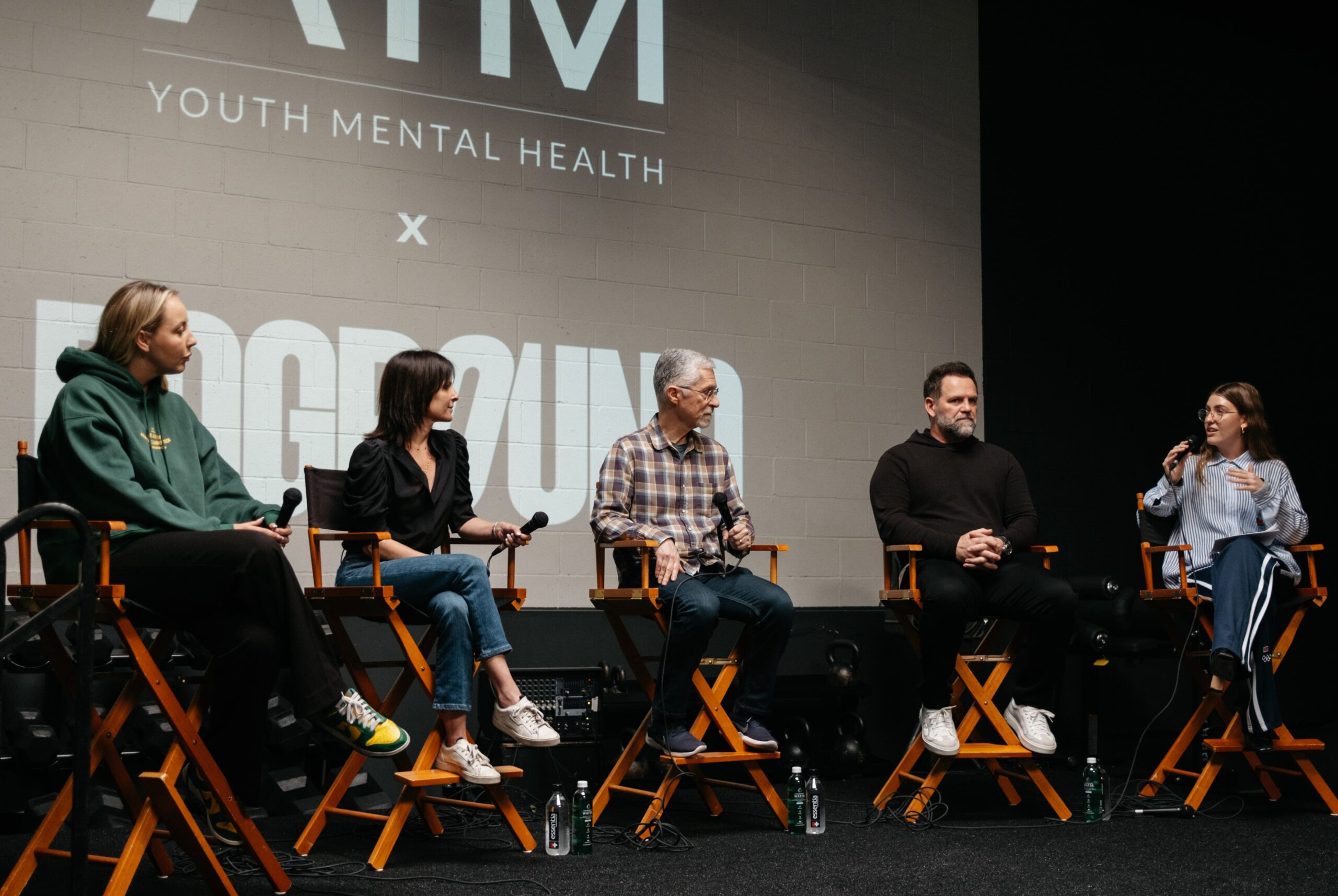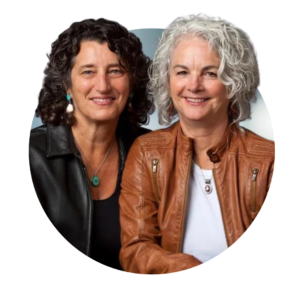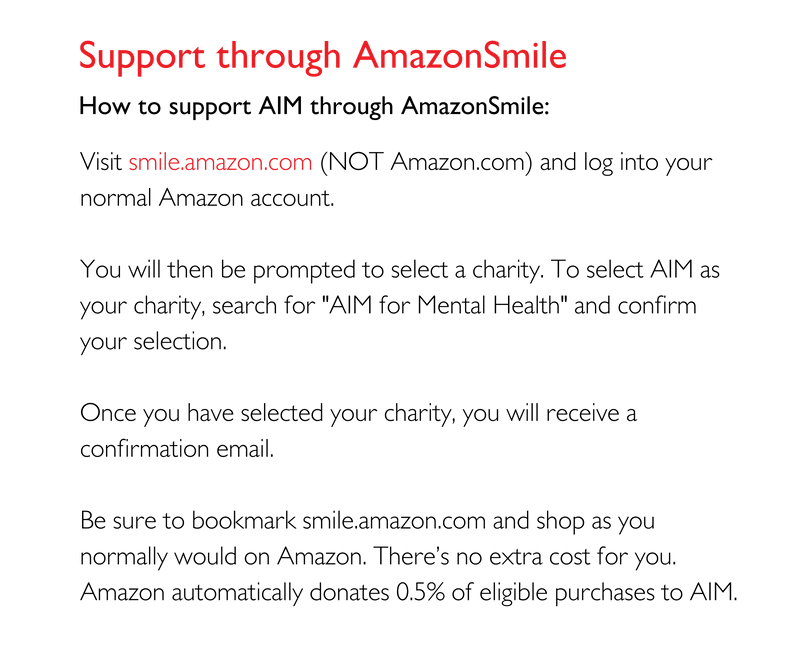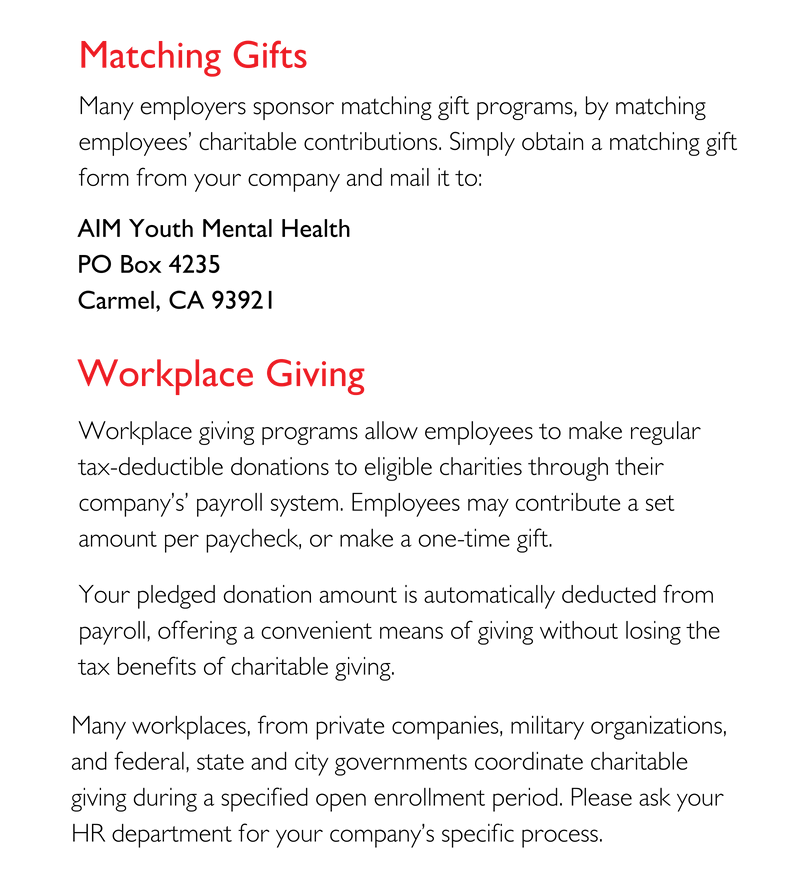

By Meadowlark Monaghan, AIM Youth Advisory Board Member
In case you haven’t heard, AIM’s Youth Advisory Board has been hosting a Mind, Body, Soul event series around the LA area for the past six months. These events are created with the intention to drive connection and empower our community with tools directly from the latest mental health research, but they turn into so much more. Our event last month, in collaboration with Dogpound Gym, focused on Meditation & The Science of Breathwork as well as Self Love Tools for Our Mental Health. The event created a space of vulnerability and camaraderie that garnered such significant conversations that I’m going to try to break off a little piece for you today.
So whether you’re a parent or caregiver looking to practice these tools for yourself in order to create a safe space of healing for a youth in your life, or you’re a youth looking for more innovative tools to add to your mental health toolbox, these three tangible coping strategies are for everyone.
(PS — Be sure to follow AIM on Instagram to stay up to date with our next Mind, Body, Soul event too!)
Let’s start with what is most accessible to us all: our breath.
While we’ve most likely all heard that breathing is essential to our lives, most of us don’t know just how essential how we breathe is to the quality of our mental and physical health.
From a mental health standpoint, proper breathing techniques or breathing exercises have positive benefits on our mood, stress, trauma, and even can change our relationship to substance usage (precisely what Dr. Dara Ghahremani, UCLA research professor and neuroscientist who joined us in our last MBS event, is studying!) And the power of our breath reaches far and wide — breathing techniques can also optimize learning and memory, relieve menstrual cramps, and even improve facial aesthetics, amongst so much more.
While research is still being conducted on exactly what happens to our bodies when we engage in these breathing techniques, one thing for certain is that breathwork adds a “synchrony between the cells” as Dr. Ghahremani explains. “There are many brain regions that are activating, oscillating, with our breathing and [the studies] have found that breathwork increases this synchrony. It’s almost like riding a bike. At first you don’t fully have momentum to have full balance, but once you get going, you create this rhythm that perpetuates itself.”
The best part? We all have access to it. “Breath-work is ancient. This is not new,” says Millana Snow, a powerful breathwork facilitator who sat on our Meditation & The Science of Breathwork Panel. “Breathwork comes from indigenous cultures from all over the world… One of the things that is really exciting about that is that this is in your blood. This is in your deep unconscious mind. Everybody has the power and the ability to do breath work and to meditate to relax themselves deeply; your ancestors have been doing it for longer than the word ‘wellness’.” Millana went on to lead us all in a breathwork exercise that we can all practice at home.
Set a timer for two minutes and practice the following exercise whenever you need a reset to your physical and mental state.
Millana’s Breathwork Exercise:
- Start by setting an intention: think about something that you would like to give your energy or focus in a positive direction
- First, notice the natural rhythm of your breath. Next, notice all the sounds in the environment. Listen deeply, hear all the sounds. This is the first layer of presence. Don’t push anything away, allow everything to be what it is as you breathe.
- Now for the breathing — you are going to breathe in through your mouth, two inhales and one exhale. Breathe into that first breath all the way down into your lower belly so your belly balloons out. Then, you’ll take a second breath into your heart, and then you’ll exhale it out.
- Do this at your own pace and go as deep and wide as you can.
- You may start to feel emotions coming up or tingles in your body. That’s all okay, just keep breathing. Keep your eyes closed.
- Bring into your mind that thing you want to transform. With each inhale send hope, love, kindness to your intention. With each exhale, exhale out anything that’s negative surrounding that particular event or circumstance.
- As you stop, notice your magic moment. Notice how your body feels all the way down to your toes. You have had a shift in your perspective and physical state. Notice that and take a moment to see how just two minutes of giving yourself more love and more oxygen feels. Bring your intention back into your awareness and notice what your relationship with it is right now.
- Before you open your eyes, make yourself a promise about how you are going to give more of this warmth and love to yourself and those around you… How can you do that this week?
Next, let’s talk about something we all have that feels a little more elusive: our shadow.
Recently popularized by Jonah Hill’s documentary on his psychiatrist Phil “Stutz”, learning about the rejected aspects of ourselves and how to integrate them into our identity is what Barry Michels, Phil Stutz, and Kristen Sargent’s work is all about. “The most sought after shrinks in Hollywood” Phil and Barry co-wrote the book, “The Tools” in 2012, alongside consultation with coach Kristen Sargent. Luckily for us, Barry and Kristen sat on our Self Love Tools for Your Mental Health panel in our latest event and their impact was profound.
Much of Barry and Kristen’s work focuses on our shadow — a hidden being inside each of us whom we try to ignore because it embodies our vulnerabilities, flaws, weaknesses, and inferiorities. Yet, in order to transform our confidence, intimacy, and expression, getting to know our shadow is imperative. “If you can learn to just love and accept your shadow, then you can love every part of you since your shadow is the hardest part to accept,” Barry described. Denying this shadow aspect of ourselves only pits us against ourselves and prevents us from realizing our potential.
“Shadow work is very much about having a way to operationally get in touch with the wisdom, intelligence, and potency of your unconscious. Shadow is a tool to help you tap into [psycho-spiritual] forces… The tools are for engaging all of this capacity that you have inside of you… that we aren’t trained to access,” explains Kristen. And these tools are effective. Barry, Kristen and their team have been transforming lives for decades via their tools, including the lives of Jonah Hill, Drew Barrymore, and more.
But where to begin with this deep-rooted work? Barry and Kristen have an actionable exercise for that. The following exercise is a tool that Barry led us in to get to know our shadow selves:
Barry’s Shadow Tool:
- Close your eyes. Imagine a situation where you embarrassed yourself, got really angry at yourself, just one of those situations in your past where you think “oh, why did I do that?”
- Now, look at the you in that situation, doing the “stupid” thing, messing up or embarrassing yourself. What your immediate response to that figure should be is some sort of judgment i.e. “I wish I hadn’t done that” or “that’s an awful part of me”.
- Now, imagine that the self that you are looking at is a separate self living inside of you. It’s been living inside of you your entire life. And from its point of view, you haven’t been a very good host. All it’s gotten from you is judgment, condemnation, or, at best, just being ignored. Imagine this is a real being living inside of you.
- Gaze into its eyes and give it some love in whatever form you love — verbal, energetically, etc. With the love, include an apology for being as mean to it as you have been throughout your life. Try to feel a deep, deep empathy for what life has been like for your shadow.
- See if your shadow has any response to the love that you are sending to it.
- When you’re ready, open your eyes.
Lastly, let’s end on something we all have familiarity with: our gratitude.
Throughout each panel discussion, gratitude was brought up a multitude of times. Similar to how “self love” feels like an elusive term without measure, while most of us feel we have an instinctive understanding of what gratitude is, it can be hard to define. However, when it comes to studying the science of gratitude, researchers have developed some structure around it. That research suggests that gratitude is not simply a social construct, but actually deeply embedded into our brains, DNA, and childhood development.
Gratitude has been linked to many benefits, including increased wellbeing, improved physical and psychological health, greater happiness and life satisfaction, and even protection against burnout. Plus, that’s only a few of the unique individual benefits! When it comes to societal benefits, sociologist Georg Simmel didn’t call gratitude the “moral memory of mankind” for nothing. Gratitude has been linked to generosity, strengthened relationships, increased prosocial behavior, and better outcomes at work. Needless to say, an active gratitude practice can help us embody all of these benefits and more.
Funnily enough, right after our last panel, I returned home to pick up my copy of “The Tools” when I discovered my old gratitude journal in my bookshelf. Whether you also love to journal or are simply a “notes app” kind of person, this exercise promotes gratitude, optimism, and creativity.
Meadow’s Gratitude Exercise:
Either write these down at the beginning of your journal to answer every morning or night, or, make a note on your phone to prompt some mindful thinking over your morning cup of coffee.
The prompts are as follows:
- 3-5 things you are grateful for today
- 2 ideas you have today (could be anything from emailing someone you met that one time to an idea for the next great Broadway show)
- 3 things you are wasting your thoughts and energy on
- 2 things out of your control
- 2 things in your control
Each of these tools—breathwork, shadow work, and gratitude—access different parts of our brains and our hearts that bring our best selves to the present moment. Practice these on a self care night, or better yet, turn them into a daily habit to see the most monumental changes. To hear more about each tool, watch our panels on AIM’s Youtube channel.
______________________
About the Author
Meadowlark Monaghan (she/hers) is a consultant using her knowledge gained as a mental health professional to act as a liaison between brands, creators, + online communities with the field of psychology and mental health. She also co-hosts the personal development podcast, Thoughts May Vary. Her work has been seen with Madhappy, Local Optimist, The Mayfair Group, Lonely Ghost, AIM Youth Mental Health, NAMI San Diego and more


















 Moving Upstream: A Proactive Approach to Addressing Behaviors and Bullying
Moving Upstream: A Proactive Approach to Addressing Behaviors and Bullying Krista Reuther is the Assistant Director of Ohana’s Community Health and Prevention Program. She received her Masters in Public Health and Social Work at UC Berkeley. She comes to this position after 14 years of clinical social work experience at Stanford Children’s Hospital in pediatric oncology, critical care, and bereavement. Her goal is to reduce the incidence of mental illness in children and adolescents in Monterey County.
Krista Reuther is the Assistant Director of Ohana’s Community Health and Prevention Program. She received her Masters in Public Health and Social Work at UC Berkeley. She comes to this position after 14 years of clinical social work experience at Stanford Children’s Hospital in pediatric oncology, critical care, and bereavement. Her goal is to reduce the incidence of mental illness in children and adolescents in Monterey County. Dr. Guss is a 35-year veteran educator with a doctorate degree in Educational Leadership. She served as a classroom teacher for 10 years, including two years as a teacher in a bilingual program in South Central Los Angeles. She has also served as a college professor, mentor teacher for new teachers, and a master teacher for teacher candidates completing their student teaching experience. She continues to be a strong advocate for the teaching profession.
Dr. Guss is a 35-year veteran educator with a doctorate degree in Educational Leadership. She served as a classroom teacher for 10 years, including two years as a teacher in a bilingual program in South Central Los Angeles. She has also served as a college professor, mentor teacher for new teachers, and a master teacher for teacher candidates completing their student teaching experience. She continues to be a strong advocate for the teaching profession. Fellowship: Stanford University School of Medicine (1994) CA
Fellowship: Stanford University School of Medicine (1994) CA Michael G. Thompson, Ph.D. is a consultant, author and psychologist specializing in children and families. He is the supervising psychologist for the Belmont Hill School and has worked in more than seven hundred schools across the United States, as well as in international schools in Central America, Europe, Africa and Asia.
Michael G. Thompson, Ph.D. is a consultant, author and psychologist specializing in children and families. He is the supervising psychologist for the Belmont Hill School and has worked in more than seven hundred schools across the United States, as well as in international schools in Central America, Europe, Africa and Asia.
 is 15 years old and a sophomore at Marina High School in Marina, CA. Her academic interests include math, history, and psychology. She joined the AIM Ideas Lab in 2021 because she wanted to be a part of something that could have a great impact on her community. Marwa is interested in youth mental health because she has always been fascinated with the human mind and she wants to support those that are suffering who may feel like their challenges in life aren’t important enough or are too afraid to seek necessary help.
is 15 years old and a sophomore at Marina High School in Marina, CA. Her academic interests include math, history, and psychology. She joined the AIM Ideas Lab in 2021 because she wanted to be a part of something that could have a great impact on her community. Marwa is interested in youth mental health because she has always been fascinated with the human mind and she wants to support those that are suffering who may feel like their challenges in life aren’t important enough or are too afraid to seek necessary help. Giovanna Panetta is a 16 year old junior at Carmel High School. She has always been called to STEM subjects, specifically biology. The AIM Ideas Lab instantly attracted her attention as a research opportunity. Gia has always comprehended the importance of mental health. She knows that COVID only exacerbated previously existing problems, and that as a community we can try and find the root of those problems. Mental health is an integral part of life, and can impede a body’s ability to be healthy. She strongly believes that life is worth living, and she wants to help anyone that thinks otherwise.
Giovanna Panetta is a 16 year old junior at Carmel High School. She has always been called to STEM subjects, specifically biology. The AIM Ideas Lab instantly attracted her attention as a research opportunity. Gia has always comprehended the importance of mental health. She knows that COVID only exacerbated previously existing problems, and that as a community we can try and find the root of those problems. Mental health is an integral part of life, and can impede a body’s ability to be healthy. She strongly believes that life is worth living, and she wants to help anyone that thinks otherwise. Dr. Friedman completed her undergraduate degree in Psychology from University of California San Diego (UCSD). She went on to complete her masters and doctorate degrees (Ph.D.) in Clinical Psychology from Rosalind Franklin University of Medicine and Science/Chicago Medical School. Dr. Friedman completed her pre-doctoral internship at Rush University Medical Center, Chicago, IL, and her post-doctoral fellowship training at the VA San Diego Healthcare System. Her clinical training and experience has been focused primarily on comprehensive assessment and effective treatments for anxiety, mood and related disorders. Dr. Friedman has extensive experience in providing Cognitive Behavioral Therapies for anxiety disorders (e.g. worry, OCD, social anxiety, phobias and PTSD), depression, adjustment disorders/life stress, insomnia and body-focused repetitive behaviors (e.g. Trichotillomania and skin picking). She has received training in evidence-based interventions for a variety of specific problems, including exposure with response prevention (ERP) for treatment of OCD, Prolonged Exposure (PE) for treatment of PTSD, and Cognitive Behavioral Therapy for Insomnia (CBT-I). Moreover, she has specialty training in the treatment of childhood anxiety and related disorders, such as ADHD, selective mutism, separation anxiety, PTSD, depression and specific phobias. In addition, Dr. Friedman has developed an expertise in research on Trichotillomania and body-focused repetitive behaviors, which has led to numerous local and national presentations. Dr. Friedman regularly attends local and national conferences, training seminars and workshops in order to stay informed on the most up to date treatments and apply state of the art science into her clinical practice.
Dr. Friedman completed her undergraduate degree in Psychology from University of California San Diego (UCSD). She went on to complete her masters and doctorate degrees (Ph.D.) in Clinical Psychology from Rosalind Franklin University of Medicine and Science/Chicago Medical School. Dr. Friedman completed her pre-doctoral internship at Rush University Medical Center, Chicago, IL, and her post-doctoral fellowship training at the VA San Diego Healthcare System. Her clinical training and experience has been focused primarily on comprehensive assessment and effective treatments for anxiety, mood and related disorders. Dr. Friedman has extensive experience in providing Cognitive Behavioral Therapies for anxiety disorders (e.g. worry, OCD, social anxiety, phobias and PTSD), depression, adjustment disorders/life stress, insomnia and body-focused repetitive behaviors (e.g. Trichotillomania and skin picking). She has received training in evidence-based interventions for a variety of specific problems, including exposure with response prevention (ERP) for treatment of OCD, Prolonged Exposure (PE) for treatment of PTSD, and Cognitive Behavioral Therapy for Insomnia (CBT-I). Moreover, she has specialty training in the treatment of childhood anxiety and related disorders, such as ADHD, selective mutism, separation anxiety, PTSD, depression and specific phobias. In addition, Dr. Friedman has developed an expertise in research on Trichotillomania and body-focused repetitive behaviors, which has led to numerous local and national presentations. Dr. Friedman regularly attends local and national conferences, training seminars and workshops in order to stay informed on the most up to date treatments and apply state of the art science into her clinical practice. Dr. Piacentini is a board-certified clinical child and adolescent psychologist and Professor in the UCLA Department of Psychiatry and Biobehavioral Sciences. He directs the UCLA Child OCD, Anxiety, and Tic Disorders Clinic and Tourette Association Center of Excellence which provide diagnostic evaluation and treatment (both therapy and medication) for youth with the above problems. He also directs the UCLA Center for Child Anxiety Resilence, Education, and Support (CARES; carescenter.ucla.edu) which provides education and programming to parents, teachers, and clinicians about anxiety prevention and management.
Dr. Piacentini is a board-certified clinical child and adolescent psychologist and Professor in the UCLA Department of Psychiatry and Biobehavioral Sciences. He directs the UCLA Child OCD, Anxiety, and Tic Disorders Clinic and Tourette Association Center of Excellence which provide diagnostic evaluation and treatment (both therapy and medication) for youth with the above problems. He also directs the UCLA Center for Child Anxiety Resilence, Education, and Support (CARES; carescenter.ucla.edu) which provides education and programming to parents, teachers, and clinicians about anxiety prevention and management. Citlalli Nava is 18 years old and a first year majoring in Psychology at Hartnell Community College in Salinas, CA. She is passionate about understanding how mental health affects how youth think, act, and feel. Citlalli joined the AIM Ideas Lab in 2021 after witnessing the increase in mental health challenges in teenagers and considering the mental health issues they are facing. Citlalli is interested in youth mental health because it is a real problem faced by her generation.
Citlalli Nava is 18 years old and a first year majoring in Psychology at Hartnell Community College in Salinas, CA. She is passionate about understanding how mental health affects how youth think, act, and feel. Citlalli joined the AIM Ideas Lab in 2021 after witnessing the increase in mental health challenges in teenagers and considering the mental health issues they are facing. Citlalli is interested in youth mental health because it is a real problem faced by her generation. Clinical and community psychologist and health care innovator Arthur C. Evans Jr., PhD, is CEO of the American Psychological Association, the leading scientific and professional organization representing psychology in the United States. With more than 146,000 researchers, educators, clinicians, consultants, and students as members, APA promotes and disseminates psychological knowledge to benefit society and improve lives – a mission consistent with Evans’ life work.
Clinical and community psychologist and health care innovator Arthur C. Evans Jr., PhD, is CEO of the American Psychological Association, the leading scientific and professional organization representing psychology in the United States. With more than 146,000 researchers, educators, clinicians, consultants, and students as members, APA promotes and disseminates psychological knowledge to benefit society and improve lives – a mission consistent with Evans’ life work.


